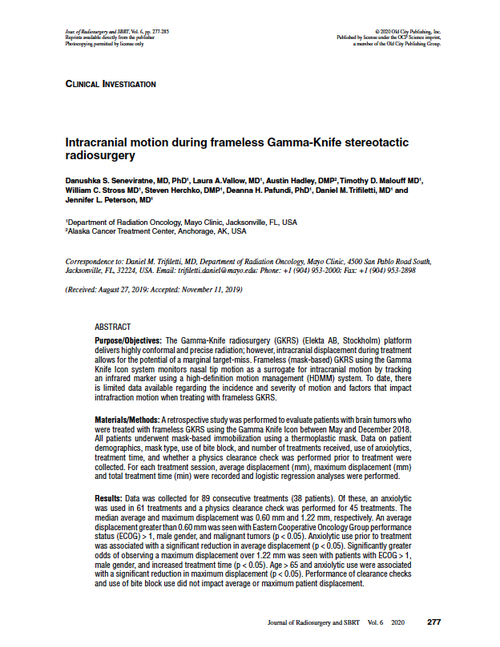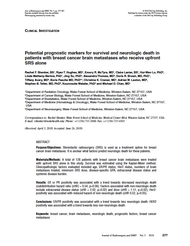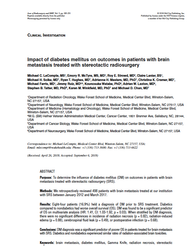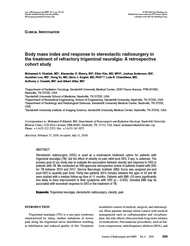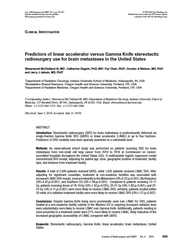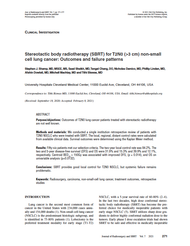- Home
- Journal Contents Downloads
- JRSBRT Downloads
- JRSBRT 6.4, p. 277-285
Product Description
Intracranial motion during frameless Gamma-Knife stereotactic radiosurgery
Danushka S. Seneviratne, Laura A.Vallow, Austin Hadley, Timothy D. Malouff, William C. Stross, Steven Herchko, Deanna H. Pafundi, Daniel M. Trifiletti and Jennifer L. Peterson
Purpose/Objectives: The Gamma-Knife radiosurgery (GKRS) (Elekta AB, Stockholm) platform delivers highly conformal and precise radiation; however, intracranial displacement during treatment allows for the potential of a marginal target-miss. Frameless (mask-based) GKRS using the Gamma Knife Icon system monitors nasal tip motion as a surrogate for intracranial motion by tracking an infrared marker using a high-definition motion management (HDMM) system. To date, there is limited data available regarding the incidence and severity of motion and factors that impact intrafraction motion when treating with frameless GKRS.
Materials/Methods: A retrospective study was performed to evaluate patients with brain tumors who were treated with frameless GKRS using the Gamma Knife Icon between May and December 2018. All patients underwent mask-based immobilization using a thermoplastic mask. Data on patient demographics, mask type, use of bite block, and number of treatments received, use of anxiolytics, treatment time, and whether a physics clearance check was performed prior to treatment were collected. For each treatment session, average displacement (mm), maximum displacement (mm) and total treatment time (min) were recorded and logistic regression analyses were performed.
Results: Data was collected for 89 consecutive treatments (38 patients). Of these, an anxiolytic was used in 61 treatments and a physics clearance check was performed for 45 treatments. The median average and maximum displacement was 0.60 mm and 1.22 mm, respectively. An average displacement greater than 0.60 mm was seen with Eastern Cooperative Oncology Group performance status (ECOG) > 1, male gender, and malignant tumors (p < 0.05). Anxiolytic use prior to treatment was associated with a significant reduction in average displacement (p < 0.05). Significantly greater odds of observing a maximum displacement over 1.22 mm was seen with patients with ECOG > 1, male gender, and increased treatment time (p < 0.05). Age > 65 and anxiolytic use were associated with a significant reduction in maximum displacement (p < 0.05). Performance of clearance checks and use of bite block use did not impact average or maximum patient displacement.
Conclusions: This is the first study to evaluate patient and treatment-related factors that influence intrafraction motion during GKRS with mask-based immobilization through HDMM tracking. Increased intracranial displacement during frameless GKRS was associated with higher ECOG, male gender, increased treatment time and malignant tumors, while anxiolytics were shown to mitigate excessive motion. Radiosurgery teams should consider these patient factors when treating patients with mask immobilization.
Keywords: Frameless, mask-based Gamma-Knife, intrafraction motion, intracranial displacement
After payment has been processed for your order of a digital copy (PDF) of this article, you will see a download link on your completed order page and also receive an email containing a download link. The links, which will enable you to download one copy of the article, will expire after 24 hours.
 Loading... Please wait...
Loading... Please wait...

